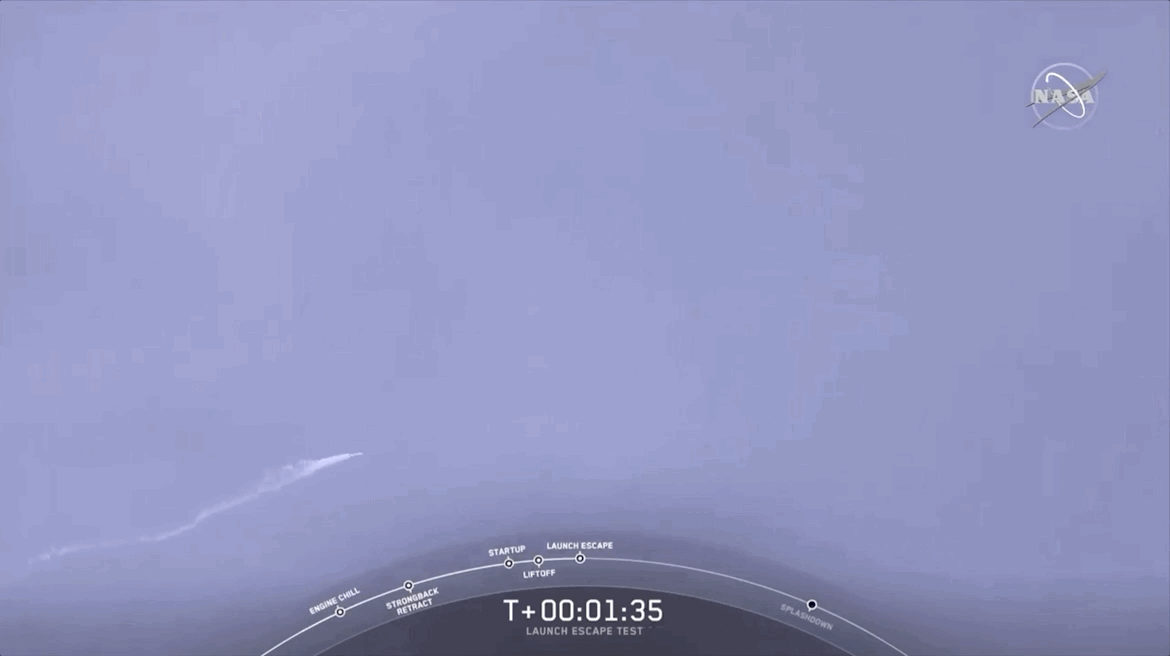SpaceX’s Crew Dragon abort system works—now it’s ready to send astronauts into space

SpaceX has just successfully demonstrated the emergency in-flight abort system for its Crew Dragon vehicle. The company is now ready to send humans into space for the first time ever.
What happened: A thrice-flown Falcon 9 launch carried an uncrewed Crew Dragon into the air from Kennedy Space Center at 10:30 a.m. local time Sunday. About 84 seconds after launch and 12 miles high, the rocket shut off its engines, and the vehicle's own SuperDraco engines turned on, separating Crew Dragon from Falcon 9 at Mach 2.2 and getting a mile away in a matter of seconds. The rocket crashed into the Atlantic Ocean, destroyed beyond repair thanks to the capsule's thrusters, and turned into a fireball soon after separation. Crew Dragon went on to safely land in the water, a safe distance from the rocket wreckage.
The in-flight abort mechanism, paramount for any human spaceflight vehicle, is supposed to ensure the Crew Dragon and its passengers are swept to safety should anything go wrong after a launch has already begun. As part of the test, SpaceX collected measurements from inside the vehicle to ensure that any astronauts who might be inside during such a procedure can withstand the increased g-forces and menacing rattles.
What does this mean: This is the final item on SpaceX’s and NASA’s checklist before the Crew Dragon has its first crewed mission. SpaceX and Boeing are part of NASA’s Commercial Crew Program (CCP), which is seeking to contract human missions to low Earth orbit (like to the space station) to private companies, while the agency itself concentrates on building out architecture for deep space travel to the moon and Mars. It’s been more than eight years since NASA astronauts were launched into space from American soil.
CCP has been anything but a smooth ride. Both SpaceX and Boeing have run into massive delays (the first crewed flight tests were slated for 2017). A launchpad fire that destroyed a Crew Dragon capsule last April set the company’s plans back by many months. Most recently, Boeing's Starliner vehicle, on its first mission into space, was unable to get to rendezvous with the space station as planned thanks to a timing glitch.
What’s next: On the bright side, SpaceX has now aced all its major tests, and could take astronauts into space for its first crewed flight to the space station in just a couple of months. Doug Hurley, one of the NASA astronauts scheduled to fly on that mission, described Sunday's test as "kind of the final exam," adding, "We're getting really close to our flight."
According to SpaceX CEO Elon Musk, the Crew Dragon hardware for that mission should ready by February, and the mission should be ready to go "in the second quarter."
NASA and Boeing are still investigating the cause behind the December mission failure, and it’s unclear how that will set back Starliner’s testing and development. The most optimistic outcome would be for NASA not to make Boeing undergo another uncrewed flight test, enabling Starliner to fly astronauts to the ISS later this year.
This post has been updated.
Deep Dive
Space
How to safely watch and photograph the total solar eclipse
The solar eclipse this Monday, April 8, will be visible to millions. Here’s how to make the most of your experience.
How scientists are using quantum squeezing to push the limits of their sensors
Fuzziness may rule the quantum realm, but it can be manipulated to our advantage.
The race to fix space-weather forecasting before next big solar storm hits
Solar activity can knock satellites off track, raising the risk of collisions. Scientists are hoping improved atmospheric models will help.
Stay connected
Get the latest updates from
MIT Technology Review
Discover special offers, top stories, upcoming events, and more.